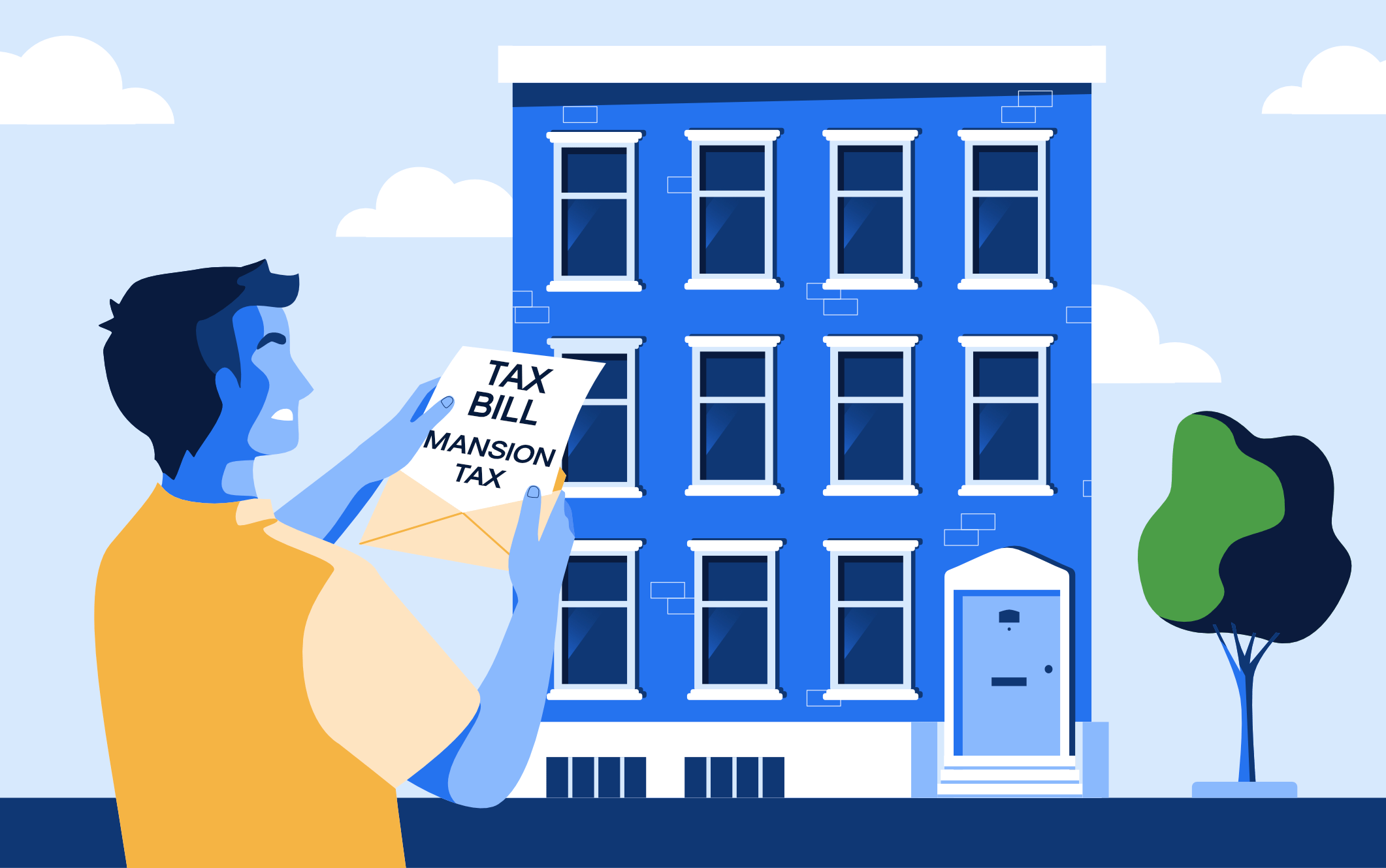What is a NYC Apartment Offering Plan?
Where Can You Find Offering Plans?
What are Offering Plan Amendments?
What Should You Look For in a New Development Offering Plan?
What is a NYC Apartment Offering Plan?
Chances are you’ve never heard of an offering plan but when it comes time to buy an apartment in NYC, it’ll be one of the key due diligence materials your attorney reviews. They’re particularly insightful if you’re looking at new development but every apartment, both condo and co-op, has one.
For this article, we will be focusing primarily on new development offering plans. We have heard from attorneys that given co-op offering plans are decades old, often the only relevant information contained therein is if the building is on land lease.
An offering plan is from the formation of the building. Not the formation of the actual construction but the organization that owns it. So for co-ops, an offering plan was issued when the building converted from rentals to a co-op but the building itself existed before. In new development, the offering plan is created along with the building.
Not surprisingly, an offering plan explains what is being offered to buyers. If you’ve ever come across a prospectus for an IPO, it’s very similar. Just like a company that’s going public needs to file a prospectus with the SEC that explains what the company does, a sponsor (usually a developer) needs to file an offering plan with the Attorney General’s office that explains what they are building and selling.
Much of the offering plan is boiler plate. However for buyers who really like to get in the weeds, you can find a few nuggets in the original offering plan and subsequent amendments.
Where Can You Find Offering Plans?
Most buyers and even most agents are surprised to find many buildings’ offering plans are available online. We’re not sure when it became common but for most buildings that are currently selling, you’ll be able to find its offering plan on the Attorney General’s website.
Once you click on that link, enter the address of the building you’re looking for. Sometimes there is more than one entry so try all of them. If the offering plan is available, you’ll be able to find it here, under the Documents tab.

On that page you will be able to see which documents are available for the project. That will likely be the original offering plan plus any amendments.
Check out the video below for a screenshare on how to find an offering plan as well as the most important tips from this post.
What are Offering Plan Amendments?
Amendments are basically updates and changes to the original offering plan. There’s rarely anything earth shattering inside but you can find a few nuggets.
For example, here are the documents available for 25 Park Row, a new development on City Hall Park -

Some of the items mentioned in the subsequent amendments include -
- Amendment 1 - Changes to some of the building’s floor plans
- Amendment 2 - Expanding the General Common Interest percentage to four decimal places
- Amendment 4 - Price increases on certain units
- Amendment 6 - Offering plan declared effective
The first two amendments are more legalese but the last two will be of interest to buyers.
If the sponsor wants to raise or lower prices, they need to get it approved by the Attorney General’s office. While this amendment will be filed, it is backwards looking. The sales office will know about any coming price increases. However by looking at which units saw price changes and which did not, you’ll be able to see which units are selling.
Related to that last point, the final amendment which declared the offering plan effective provides even more detailed information. It includes which units were sold and when. This is another view into which lines are selling and how sales have trended over time.
An offering plan can usually be declared "effective” when 15% of the units have been sold to third parties. You’ll see here the plan was declared effective once they sold 30% of the units. Going back to the original offering plan, the sponsor had the option to declare the offering plan effective once hitting 15% but didn’t have to until 80%.
What Should You Look For in a New Development Offering Plan?
Offering plans can be a doozy. You’re probably not going to want to curl up on the couch and read through all 500+ pages so what sections are important for NYC buyers?
Special Risks - You'd expect the Description of Property to come first but nope, it's the Special Risks section. Right off the bat, the offering plan will list the everything buyers should know about this particular property. There will be a lot. We took a sample and 40-50 risks seems to be the norm. Many of these are boiler plate but still worth noting such as when the sponsor will give up control, if there are any lot line windows and how square footage is measured. You'll also find some more unique risks like if there are subway tunnels under the building or the details of any land lease.
Description of Property - You want to know what you're buying right? The Description of Property will do just that and hopefully there won't be any surprises. It'll have the specifics on where the property is located, what's actually for sale (number of apartments, storage bins, parking spaces, etc), if there will be commercial space, the building's amenities and a whole lot more. The Description of Property will also reference an expanded section later in the offering plan which will go into very specific details such as individual appliance models and which internet providers are going to be available.
Schedule A - This is the part you’ll hear the most about and where the sponsor lists everything that’s for sale - every apartment, storage cage, parking space, bike rack, etc. Most of the focus will be on the apartments though. For every unit, the sponsor must include -
- Price
- Square footage
- Number of bedrooms and bathrooms
- Expected monthlies - common charges and real estate taxes
- Percentage of common elements for the unit
An interesting quirk of offering plans is the sponsor cannot sell a unit for more than the Schedule A price. If they want to raise prices, they need to file an amendment with the Attorney General’s office to do just that. Selling at lower prices is allowed.
The Notes to the Schedule A will also explain how square footage is measured. Most commonly, this is from the outside of the walls meaning your interior, livable space, will be smaller than what’s advertised.
Schedule B - Here you’ll find the sponsor’s budget for the condo. Every line item will be listed and any assumptions made to get there. For example, in 25 Park Row’s offering plan, they estimate the salaries for the building manager, handyman, concierge, doormen and porters and how many of each will be employed. They gross that up for applicable taxes and benefits and arrive at the Wages line item for the budget. They also list an engineer’s estimate for the common area’s utility bill and so on.

Especially if the common charges seem unrealistically low, you’ll want to have your attorney take a closer look at this section. You don’t want to fast forward a couple years and realize the budget was optimistic, sticking you with higher than expected common charges.
Property Taxes - There isn't a headline section for this but it's one of the most important disclosures. In the Schedule A, every unit will have its property taxes listed down to the penny based on a calculated amount for the building's first fiscal year but just like square footage, you need to look at how it is calculated. If the building is under construction for part of that first fiscal year, the blended taxes will be artificially low. They'll be advertising property taxes you'll never pay. In that case, taxes for the second year must also be provided and they will be significantly higher. This is very tricky (we're actually shocked it's allowed) so make sure to have your attorney investigate. We're also happy to look into a building you're considering and can be reached at info@yoreevo.com.
When is the offering plan deemed effective? An offering plan becoming effective means the building is happening - the sponsor is committed to constructing the building and buyers are going to buy their apartments. As mentioned above, offering plans can usually be declared effective once 15% of the units are sold in arms length transactions (not to the sponsor’s mom) and must be declared effective at 80%. Up until this point, the sponsor can cancel everything and give buyers back their deposit. That’s rare though as the sponsor only makes money if they sell the apartments. The sponsor also doesn't wait to start construction so significant amounts of capital have been invested prior to this point.
Closing costs - There probably won’t be anything unusual here, at least by new development standards, but the offering plan will list the closing costs buyers are expected to pay. Incremental to the regular resale buyer closing costs, new developments usually ask buyers to pay for the transfer taxes, the sponsor’s attorney, working capital contribution and, if applicable, a portion of the super’s apartment.
One quirk to note is if you pay these additional fees, they are considered part of the purchase price and will gross up the recorded price. This is important if you're close to any mansion tax thresholds, especially $1,000,000.
Resale Restrictions - Often sponsors place restrictions on resales before closeout. Sometimes it’s pretty straightforward - you might not be allowed to resell your unit for a year after closing. Sometimes there’s a fee charged if you do. For example, 25 Park Row charges a 5% “resale fee” if you sell within a year of the building's first closing. While most buyers aren’t planning to flip the property (and we don't recommend it, you’re very likely to lose money if you do), it’s a potential restriction or cost you should be aware of.
Identity of Parties - Building in NYC isn't easy so you want to make sure the sponsor knows what they're doing. Here you'll find the principal behind the sponsor (an actual person) and other projects they've been involved with.
Not surprisingly, given most offering plans run over 500 pages, there’s a lot more in them. You should always consult with your attorney to see if there are any other sections or disclosures they deem important.
Yoreevo is a real estate brokerage so while we will help you save up to 2% on any new development in the city with our commission rebates, we aren’t substitute for your attorney. We believe everything in this article to be accurate but it’s meant for informational purposes and should not be considered legal advice.



